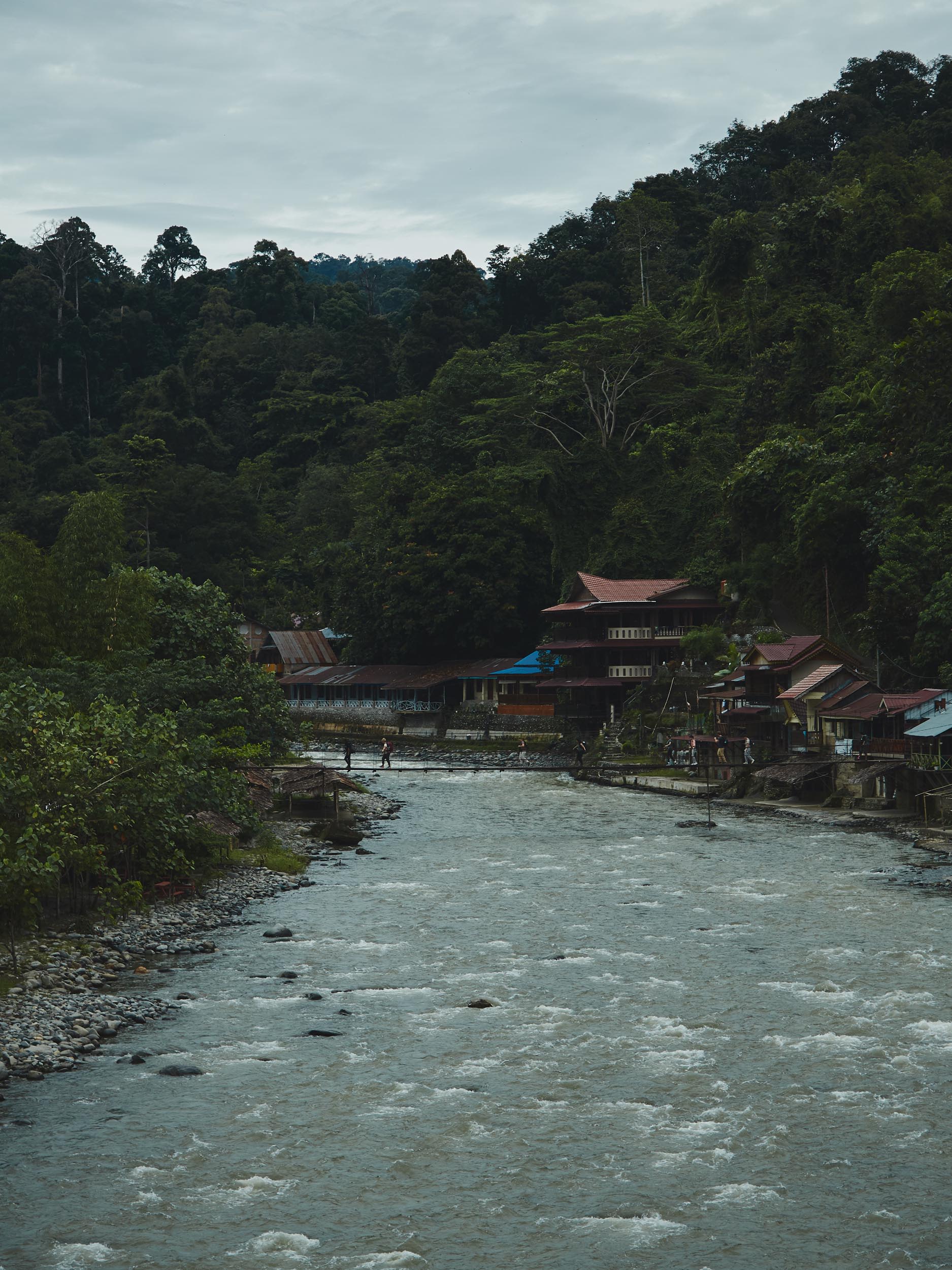“The jungle offers so much more than just orangutans,”
Her words rang in my mind, as I slid and stumbled down the slippery Sumatran jungle path, my limbs dotted with feeding leeches, my ears filled with sounds of cicadas and insects I couldn’t name. Around me were trees so big that six adults would struggle to encircle them.
Indonesia is home to some of the world’s most important rainforests, but as a city kid born and raised in Jakarta, those forests were mystical and foreign to me — until now. As a guest of Green Hill, a conservation-minded guest house in Sumatra, I was finally leaving my city self behind, and immersing myself in the richness of Indonesia’s forests. We are genuinely doing our best to provide conservation focused tourism that benefits — in some small way — not only the rainforest and wildlife but the human communities too.
Green Hill’s roots
improve alexa rankGreen Hill’s roots lie in Bukit Lawang, a town near the Bohorok river in North Sumatra. The town is a gateway to the UNESCO-listed Gunung Leuser National Park, and is best known for its population of semi-wild orangutans, which emerged from a conservation project and sanctuary.
I learnt that while the orangutan rehabilitation centre closed in 2002, the orangutans remained in the surrounding forest, becoming the focus of tourism in Bukit Lawang. Because the industry depends on sightings and contact with the orangutans to hook travellers, unsavoury practices have become commonplace, such as feeding the primates so visitors can snap selfies with them.
In 2006, Andrea and her husband Mbra — a primate conservationist and a veteran trekking guide respectively — started Green Hill to champion a better ethos. They lead tours that keep a respectful distance from wildlife, engaging like-minded local guides to do the same.
They also bought five hectares of a former palm oil plantation to let the land regenerate and rewild, turning it into a natural corridor that connects wildlife to Gunung Leuser National Park. On its fringe sits a second property, the Kuta Langis Ecolodge, a base for guests like me to explore Tualang Gepang & Bukit Kencur, the lesser-seen side of Gunung Leuser, guided by locals who can earn extra income from sustainable tourism.
Into the wild: Tualang Gepang / Bukit Kencur jungle trek
The first sign that the Tualang Gepang / Bukit Kencur trek was no walk in the park was when our guides had me and Adhyt, my photographer, drench our socks and shoes in tobacco-infused water. “It doesn’t ward off leeches, but once they attach themselves, they’ll die,” explains Mimpin, one of the guides, as we set off.
This section of Gunung Leuser National Park isn’t popular with tourists, who mostly come to Bukit Lawang to see orangutans. But there are amazing levels of biodiversity in this part of the forest. Ando, our other guide, shares that there are wild forest pigs, deer, and sun bears adding, “Sumatran tigers sometimes, but very rare.”
Animal sightings should be rare, stresses Andrea, who explains that while the semi-wild orangutans at Bukit Lawang have been conditioned to approach tourists for food, “wild animals wouldn’t just come up to humans; they would’ve run. But even without “major” wildlife sightings, the jungle is magic.
Mimpin told us that in 2021, when the wijaya kusuma or fishbone cactus became trendy as a houseplant, villagers came to the forest to scavenge, as they grow all over the jungle floor. Same with aglaonemas, another popular house plant that comes in a riot of colours, patterns, and shapes. As we walked, he introduced us to medicinal and edible herbs and fruits, such as cajuput which tastes minty, and is used to treat colds, malaria, and stomachaches.
Deeper in the jungle were trees that have been around long before Indonesia became a nation almost 80 years ago, their trunks impossibly wide. Around noon, we came to an underground stream running through a “tunnel” under one of these giant trees, with a ceiling of sprawling roots and soil. In a small cranny, away from sunlight, we spy a tiny Rafflesia bulb, waiting to unfurl into the world’s largest flower.
We walked on and took a break by a waterfall. While Ando and Mimpin prepared lunch, Adhyt and I did a quick leech inspection, removing offenders with a simple trick the guides taught us: using the tips of our thumbs and index fingers, we pinched the head of each leech — the part that attaches itself to you — hard. Then we pull it off and flick it away quickly to make sure it didn’t reattach itself. Icky, but easy!
After a quick lunch, we took a dip in the river to cool off. I was thrilled when Ando said the campsite was only two hours away, as I was exhausted. But I celebrated too soon — for the remainder of the way, I slipped and fell down slick paths, and finally, crossed a river to get to our campsite.
Bogan, the cook from Kuta Langis, was already waiting for us at the campsite, preparing dinner in the tent that was our camp “kitchen.” When night fell, darkness was absolute. Though my eyes were open, it was so dark I thought they were still closed.
I was woken before daybreak by Thomas Leaf Monkeys — which are endemic to northern Sumatra — marking their territory sonically across the river. I spent a few moments enjoying the symphony while trying to spot them but they were too well hidden in the thick jungle foliage.
We set off back to Kuta Langis Ecolodge after breakfast. As we walked, the jungle gradually gave way to tidier crops of rubber trees, arengas (a type of palm) and other plants grown for local consumption and commerce. Then we hit asphalt, and found ourselves back in the village.

Comments
Post a Comment